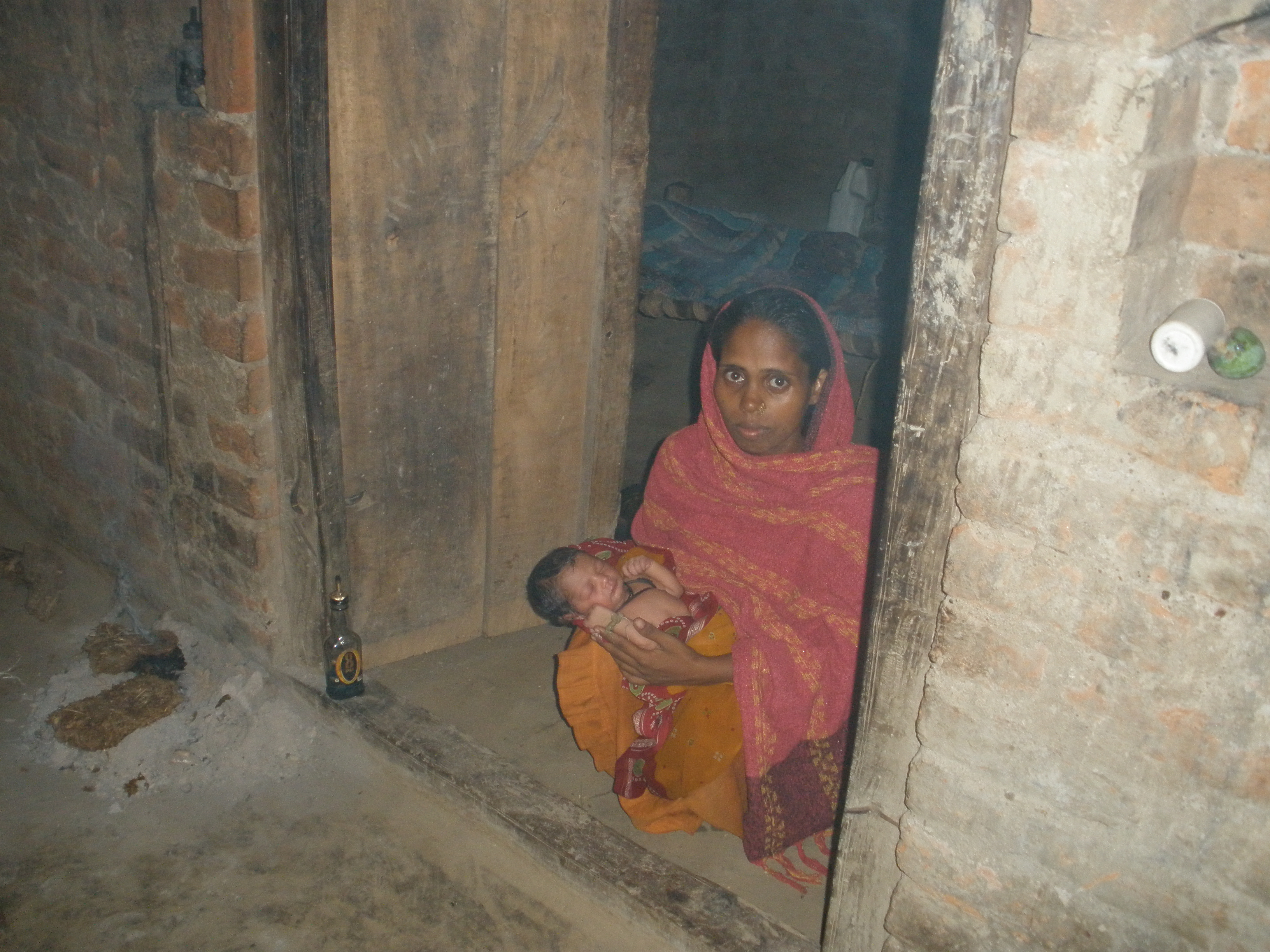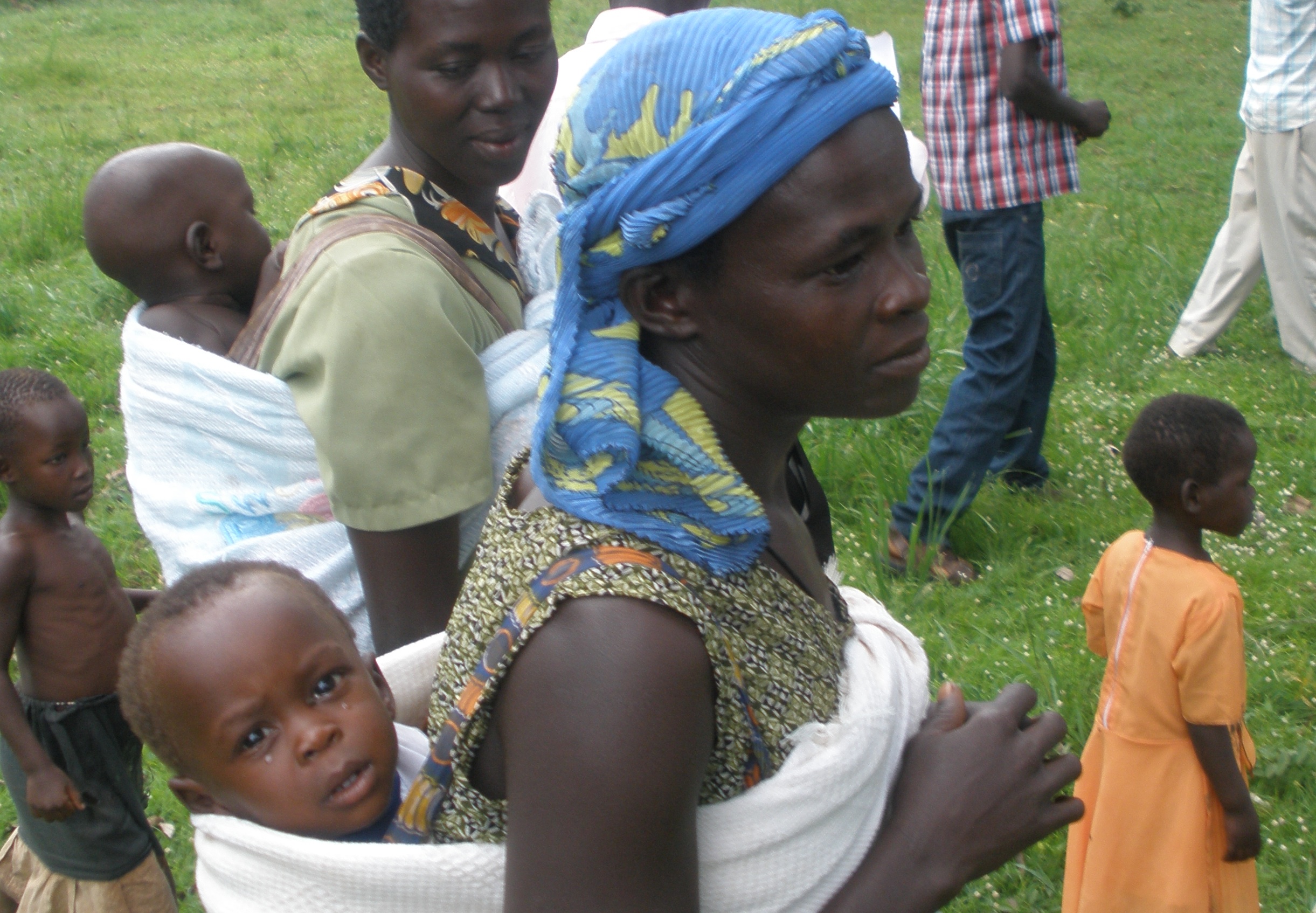
Two scenes from this summer as maternal and child nutrition emerged from the shadows:
In Uttar Pradesh, India, a pregnant woman named ShyamKali makes a midnight ride to the hospital. Lacking any transport of her own, she calls for a bicycle rickshaw and climbs onto the wooden wagon. The driver pedals away into the night.
The ride is short, about 15 minutes, and so is the labor. After several hours, she is back in the rickshaw heading home with her fifth child, a girl she calls Anshika.
To readers in the western world, this would seem like a nightmarish delivery, an ordeal out of a previous century. But in the rural villages of Uttar Pradesh, this mother's midnight ride was progress.
She went to a medical facility to give birth. She brought with her clean clothes to swaddle the baby. The newborn was swiftly and tenderly cleaned and immediately placed on the mother's chest, where breastfeeding began. Traditionally in these parts, a baby born at home would be scrubbed and left alone unclothed, increasing the risk of hypothermia. And breastfeeding wouldn't begin for at least several hours, perhaps not for a couple of days; the mother would discard the first milk, rich in nutrients and anti-bodies, believing it to be dirty.
These changes in behavior have been spurred by the efforts of an organization called the Community Empowerment Lab, which has been working to improve maternal and infant health care in Uttar Pradesh. In the past decade, tens of thousands of women have begun to adopt these practices, reducing newborn mortality rates by more than half.
But yet, as the first day of Anshika's life showed, there was much more to do. When they returned to their humble brick and mud house, mother and daughter went into two weeks of confinement; they would be isolated in one of the two rooms in the house. Only the mother-in-law and a health worker would be allowed to enter. All ventilation holes were plugged by green plastic bags. Only the door was open, to an interior yard. Purification fires to ward off evil spirits were lit at the entrance to the house and beside the door to the confinement room. Smoke from the smoldering dung stung the eyes and nostrils and throat. The temperature neared 100 in the humid pre-monsoon days.
The mother sat on the dirt floor in the open doorway, catching whatever fresh air she could. The baby slept. ShyamKali said her husband was very angry with her: five children now, five daughters. A day laborer in distant New Delhi, he wouldn't speak to her on the phone and refused to come home and visit his newest daughter. She was invisible to him. He, like many fathers in India, preferred a son.
So little Anshika was born into a national and international quest for nutritional justice and gender equality. Will she beat the odds of her surroundings, where half the children suffer from malnutrition and stunting? Will her father eventually embrace her as he would a son? Stay tuned for updates, as we follow mother and daughter along with other mothers and children in Guatemala, Uganda, the U.S. and elsewhere in India for the next 1,000 days.
A few days after Anshika's birth, some of the world's leading experts on maternal and infant care took early morning rides to London's Imperial College. None of them, it is safe to say, arrived on the back of a bicycle rickshaw. They were gathering to highlight what is at stake in the global efforts to improve nutrition and hygiene in the 1,000 days — what is at stake for Anshika and hundreds of millions of mothers and children; what is at stake for their families, their communities, their nations; what is at stake for the entire world.
They came for the launch of a publication that Anshika's mother, who has little formal education, can't even read. It was the newest series on maternal and child nutrition published by the premier medical journal, The Lancet. The articles established the need for nutrition-specific interventions; forged the connection between agriculture and nutrition in overcoming deficiencies of essential vitamins and minerals; emphasized the nutritional consequences throughout the entire life cycle and noted the emerging double burden of undernutrition and overweight and obesity; linked politics and malnutrition; and highlighted the economic cost of inaction.
The statistics are certainly eye-opening: Undernutrition causes 45% of child deaths, resulting in 3.1 million deaths annually; one-quarter of those deaths are due to suboptimal breastfeeding; 26% of children under five years of age in low and middle income countries are stunted; overall, 165 million children are stunted; undernutrition reduces a nation's economic advancement by at least 8%. Where, indeed, is the outrage?
The Lancet articles showed how the impact spreads from the individual to the family, to the community, to the nation, to the entire global economy. The United Nations' food organizations chimed in, calculating that malnutrition costs the world $3.5 trillion in health care and lost productivity. Think also of the opportunity costs: what might a child have accomplished if undernutrition in the 1,000 days didn't compromise his or her mental and physical capacity?
In short order, stunting and nutrition marched to the top of the political agenda this summer. A few days after The Lancet launch, British Prime Minister David Cameron chaired the Nutrition for Growth Summit and thousands of people rallied in the streets of London to press the politicians to back their words with action. Several weeks later, President Obama visited Africa and talked about the progress of his Feed the Future initiative in ending hunger through agriculture development: more than 7 million farmers adopting improved agriculture techniques, nearly 4 million hectares of land under improved cultivation and management practices, 12 million children under five reached by U.S.-government supported nutrition programs. Nutrition became a presidential talking point.
Progress certainly, but the pace needs to quicken. The Lancet noted that the number of stunted children has steadily decreased globally from 253 million in 1990 to 178 million in 2005 to 165 million in 2011. This represented an annual rate of reduction of 2.1%. But it noted that the World Health Assembly's goals put the annual reduction rate at 3.9% to achieve a stunting target of 100 million children by 2025. At the current rate, stunting is expected to decline to 127 million.
Thus, The Lancet report closes with these words: "There is an enormous unfinished agenda."
Both outrage and inspiration will be needed to push it forward.
*
outrageandinspire is Roger Thurow's Chicago Council-supported website. Here is a brief description:
"Where is the outrage?," came the plea in London at the conclusion of a parade of alarming statistics on child stunting.
"Where is the inspiration?," asked the young student at another gathering this summer, wondering how to move forward in the assault on chronic malnutrition, a scourge that is often described as "hidden hunger."
Well, here they are, outrage and inspire side by side. Welcome to our new website, outrageandinspire.org, where we will strive to make the invisible visible. The spotlight will be on the 1,000 Days, the critical time of a woman's pregnancy through her child's second birthday. It is in these days when poor nutrition leaves 165 million children stunted, confined to lives that don't reach their potential (that's the outrage!), and it is in these days where some of the most innovative advances in the war on hunger are unfolding (that's the inspire!). Good nutrition in these days, no matter where the mothers or children may be, leads to a better world for all of us. Keep checking in, you will see.
- View this story on Outrage and Inspire






